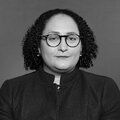Politically active tax exempt entities are turning into monstrosities that only their parents could love. They get to spend millions in politics, but often without registering as transparent PACs. This leads to lots of confusion about what’s in and out of bounds for these groups. But that doesn’t mean papers of record should perpetuate the confusion.
Yet this is exactly what happened. Earlier this month a dispute erupted between Bradley Smith, former chairman of the Federal Election Commission, and CNN personality and New Yorker staff writer Jeffrey Toobin. Smith took Toobin to task in the pages of The Wall Street Journal for a May New Yorker blog post. The overall subject was the Internal Revenue Service “scandal” about the agency targeting conservative groups.
In essence, Smith (Harvard Law School 1990) accused Toobin (Harvard Law School 1986) of not knowing his tax law and for getting the line between 527s and 501(c)(4)s wrong. Then Smith got nasty. He lumped in Toobin with “IRS apologists.” Before pistols are drawn, perhaps some clarity would be helpful.
Three sections of the tax code are at issue: 501(c)(3), 501(c)(4), and 527. To simplify, we’ll call them C3s, C4s, and 527s. C3s, which include everything from the Red Cross to Amnesty International, can’t get involved in partisan politics at all, because contributions are tax deductible. C4s, on the other hand, can, under certain circumstances, engage in some political activity according to IRS regulations. Unlike C3s, contributions to C4s are not tax deductible. According to federal tax regulations, C4s do not have to disclose their donors publicly.
Whether C4s must make more elaborate public disclosures to state regulators is a question of state law. Judges in California and Montana have ruled in favor of revealing the underlying donors of dark money C4s spent in elections in 2012. And most recently, New York State adopted new disclosure regulations in 2013 for charities registered in the state of New York that spend in state and local elections. As the Public Advocate for the City of New York detailed in a new report, this approach could be taken by other states worried about the proliferation of dark money in elections.
Another possible source of political money are 527s. These are explicitly political tax exempt organizations, which can either keep their donors secret and pay a 35 percent tax; or disclose their donors and avoid paying this tax. Not surprisingly, most 527s opt for disclosure over the tax. Smith criticized Toobin for having the temerity to suggest that certain politically active C4s be reclassified as 527s under the tax code.
The duel over nonprofit disclosure is so contentious because the significant increase in big, secret spending by these groups impacts voters. As I wrote in a law review article, entitled Hiding Behind the Tax Code:
Voters, like other busy adults, rely on mental shortcuts to place the candidates into a sensible framework… One of these shortcuts is seeing who is supporting or opposing a given candidate. If a candidate is getting praise from an industry that the voter distrusts, the voter may distrust the candidate too. But when it is unclear who is praising the candidate, the voter is deprived of a useful democratic heuristic.
When asked, voters overwhelmingly want better campaign finance disclosure and more accountability.
Lastly, Smith recycles the claim that adopting more transparency for politically active tax exempt organizations would chill their speech. Eight of nine Supreme Court Justices disagree with him finding in Citizens United v. FEC, McConnell v. FEC and Buckley v. Valeo that campaign finance disclosure requirements “impose no ceiling on campaign-related activities, and do not prevent anyone from speaking.” He is, of course, entitled to his own opinion, but not to his own facts.
Ciara Torres-Spelliscy is an assistant professor at Stetson University College of Law. Prior to joining Stetson’s faculty, she was Counsel in the Democracy Program of the Brennan Center for Justice at NYU School of Law.
(Photo: Flickr)
